new posts in all blogs
Viewing Blog: Anita Loughrey's Blog, Most Recent at Top
Results 1 - 25 of 156

A journal written by educational writer Anita Loughrey, which details her experiences and thoughts on writing, with particular reference to writing for children.
Statistics for Anita Loughrey's Blog
Number of Readers that added this blog to their MyJacketFlap: 5

By: Anita Loughrey,
on 7/22/2016
Blog:
Anita Loughrey's Blog
(
Login to Add to MyJacketFlap)
JacketFlap tags:
Add a tag
In the July issue of Writers' Forum I interviewed Oskar Cox Jensen about the research he did for his novels, The Stones of Winter and The Wild Hunt, which are set in Scandinavia. He explained how fieldwork inspired him and helped him to solve specific issues with the series.
The books are Viking tales of myth and magic. All is not well at the Viking court of Jelling. Home to the mysterious Yelling Stones (three witches turned into stone). It has always been a place of power and a haven for 'the old ways'. Troubling news has reached King Gorm's court - but fourteen-year-old princess Astrid isn't concerned. She's far more worried her family prefers her inside sewing, or planning her marriage, rather than letting her explore the forest, or ride Hestur, her beautiful snow-white horse.
Astrid finds herself at the heart of a battle that will change her life forever. Leif, an ambitious and talented young poet, arrives at King Gorm's court and announces he has been sent visions from the witches of the Yelling Stones, saying a dangerous and powerful force is coming - one that will change the face of Denmark -and only Astrid and Leif can stop it. With danger all around them, including trolls, witches and a terrifying creature called 'The Beast', can they tell who the real enemy is in time to stop them?
To find out more about Oskar Cox Jensen you can visit his website at:
www.oskarjensen.com

By: Anita Loughrey,
on 6/16/2016
Blog:
Anita Loughrey's Blog
(
Login to Add to MyJacketFlap)
JacketFlap tags:
Add a tag
Last weekend I was teaching a course on writing picture books in Herne Bay, Kent.
The course launched with wine and nibbles at the Grosvenor House guesthouse, hosted by the lovely Frances Brown. I did a presentation on the myths of picture book writing and we all got to know each other. We then walked into Herne Bay town, to a local art gallery for a private viewing of paintings by _______, before going to eat at an amazing little Italian pizza house, A Casa Mia.
After breakfast, our morning session kicked off with an introduction to picture books looking at word count, structure and themes. We spent time analysing a wide range of picture books looking for common features and what appealed to us as readers. This sparked lots of interesting discussion.
For lunch, we went to an adorable vintage tea shop with lace table clothes before embarking on our afternoon sessions where all the delegates plotted a new picture book. They shared and discussed their ideas within the group and for homework were asked to complete their stories and make dummy books to show the group in the morning.
Each course member completed their homework to a high standard and I was impressed with the quality of the stories they presented. They had all taken on board everything I had said about plot and structure. After looking at each of the picture book dummies we started another picture book idea, inspired by group work and role play to develop a new character.
During the final session, we discussed the submission process, writing a picture book elevator pitch and I told everyone my top ten tips for being a picture book writer.
We are hoping to run a similar course in the Autumn. If you are interested please contact Frances Brown at
Grosvenor House. Places are limited to six people per course.

By: Anita Loughrey,
on 5/31/2016
Blog:
Anita Loughrey's Blog
(
Login to Add to MyJacketFlap)
JacketFlap tags:
Add a tag
Katherine Rundell’s Research Secrets
The Wolf Wilder is about a girl called Feodora who is training to be a wolf wilder. A wolf wilder is someone who teaches tamed animals to fend for themselves - to be wary of humans, run and fight. The exact opposite of an animal tamer. Feo lives in the snowbound woods of Russia with her mother. Ten minutes away, in a ruined chapel, lives a pack of wolves.
When the murderous hostility of the Russian Army threatens her family and the wolves very existence she has no option but to go on the run. What follows is a story of revolution and adventure, about standing up for the things she loves and fighting back.
Katherine told me how she went about researching wolves and Russia to write her novel. In the feature, you can find out which books she read, how she accessed childhood memories and why she found the online digital archive
JStor invaluable.

By: Anita Loughrey,
on 5/26/2016
Blog:
Anita Loughrey's Blog
(
Login to Add to MyJacketFlap)
JacketFlap tags:
Add a tag
Imagine how overjoyed I was to see my books being recommended on the
Letters in the Sand website created by Caitlin, who is a mother of two and has experience as an educator in both public and private schools, as well as the being a home-schooling parent and teaching in community educational playgroups.
These particular books were written for
QED Publishing and are illustrated by
Sue Hendra. They were designed to help children to distinguish between different shapes. The emphasis is on making learning fun. In the book s I use the environment to reinforce what the reader sees to help them recognise shapes by using familiar, everyday objects in the world around them.
In the United States it is possible to buy all four books in one volume, entitled Shapes Around Me and published by
Scholastic.

By: Anita Loughrey,
on 5/17/2016
Blog:
Anita Loughrey's Blog
(
Login to Add to MyJacketFlap)
JacketFlap tags:
Add a tag
In the May issue of
Writers Forum, I have interviewed
Emma Claire Sweeney about how the research for her novel Owl Song at Dawn led to a PhD in autism and learning disabilities.
Owl Song is published by
Legend Press and is a tribute to Emma’s autistic sister Lou. As well as her extensive research into the history of learning disabilities, Emma talks about how the path of her character, Maeve Malone and the fictitious Sea View Lodge, follows a similar trajectory to the rise, fall and rise again of the
Midland Hotel in Morcombe.
Maeve Maloney is a force to be reckoned with. Despite nearing eighty, she keeps Sea View Lodge just as her parents did during Morecambe’s 1950s heyday. But now only her employees and regular guests recognise the tenderness and heartbreak hidden beneath her spikiness. Until, that is, Vincent shows up.
Vincent is the last person Maeve wants to see. He is the only man alive to have known her twin sister, Edie. The nightingale to Maeve’s crow, the dawn to Maeve’s dusk, Edie would have set her sights on the stage – all things being equal. But, from birth, things never were.
If only Maeve could confront the secret past she shares with Vincent, she might finally see what it means to love and be loved: a lesson that her exuberant yet inexplicable twin may have been trying to teach her all along.
Owl Song at Dawn will be released on July 1st, 2016 and is available for
pre-order now.

By: Anita Loughrey,
on 5/6/2016
Blog:
Anita Loughrey's Blog
(
Login to Add to MyJacketFlap)
JacketFlap tags:
Add a tag
This month I have a brand new regular feature in the national writing magazine
Writers’ Forum. It is all about Writing for Children. The first issue launched with insights into the children’s book world with
Becky Bagnell founder of the
Lindsay Literary Agency. She explained to me what she looks for in a manuscript, what makes a good children’s book agent and what makes a great children’s book.
Becky set up the
Lindsay Literary Agency in 2008 having worked as a commissioning editor for Macmillan. The agency represents a wide range of authors including
Pamela Butchart, who won last year’s
Blue Peter Award. She has a particular interest in discovering new talent from picture books to YA.
At the London Book Fair this year, Becky was able to complete on the sale of US rights to
Sam Gayton’s new book His Royal Whiskers and she also had a couple of offers from UK publishers on two new books - one for an author who’s already published, but it will be their first deal together and one for a debut author. She is also due to appear at
Winchester Writing Festival in June where she will be engaged in one-to-one appointments on the Friday and Saturday.
There are loads of other features scheduled to be covered in my new monthly column, including interviews with top authors, editors and more agents.

By: Anita Loughrey,
on 5/1/2016
Blog:
Anita Loughrey's Blog
(
Login to Add to MyJacketFlap)
JacketFlap tags:
Add a tag
PICTURE BOOOK WRITING WITH ANITA LOUGHREY
Grosvenor House must be one of the most idyllic and relaxing places in the whole world. I feel honoured to be able to teach a writing for picture book course here. What more could you ask for?
Relaxing atmosphere, sea, good food and time to indulge yourself in something you love.
RETREAT BREAKDOWNThis course is for ideal all writers who want to write picture books and wish to develop their writing skills by looking in depth at the structure, characterisation and plot of picture books. Course delegates will be given opportunities to develop their own characters and picture books in a supportive and friendly atmosphere. The methods and techniques taught can also be used for writing chapter books and novels for older children.STARTING TO THINK ABOUT WRITING FOR CHILDRENMyths of writing for children Writing for different age rangesWRITING A PICTURE BOOKCommon themes Structure and layout
PLOT
Story arc
Plotting a picture book
BUILDING CHARACTERS
Getting to know your characters
Finding your character’s voice
For further details about the Picture Book retreat and prices contact Frances Brown: hello@grosvenorhousevents.co.uk

By: Anita Loughrey,
on 4/25/2016
Blog:
Anita Loughrey's Blog
(
Login to Add to MyJacketFlap)
JacketFlap tags:
Add a tag
Today, I launched a brand new blog for a life-long fetish of mine – stationery. It is called
Papers Pens Poets and is the place for writers and other stationery addicts to show their passion for paper and pens.
The blog is the brain child of my friend and fellow children’s writer
Jo Franklin. She had invited me to the
London Stationery Show, an annual event where stationery creators and retailers come together to network, and we were discussing travel arrangements and our plans for the day over messenger, Thursday 21
st April at 16:34. Jo said:
“Let’s tell the stall holders we are going to create a stationery review blog called something like Papers Pens Poets aimed at writers and we are looking for products to review with links back to their websites.”
To which I replied:
“Wow. Sounds cool. We should do that.”
So we did.
Over the weekend we created a website with blog and contact facilities. Our current header was designed especially for us by the wonderful,
Chitra Soundar, children’s book writer and stationery enthusiast. We set up author interviews, made and ordered business cards, found quotes from famous authors to go on our business cards, set up a Twitter page and an Instagram page and also wrote and scheduled several posts. We were very, very busy.
We are going to be doing lots of stationery reviews, articles and interviews with writers and illustrators. If you are a writer, artist and avid stationery lover and would like to be interviewed about your passion for stationery please let me know by leaving a message.
You can also follow and comment on our blog on
Wordpress, pop over and wish us a happy launch day on
Twitter@paperspenspoets and follow and hashtag us on
Instagram. You can read my post about National Stationery Week and the writing matters campaign
here.

By: Anita Loughrey,
on 4/18/2016
Blog:
Anita Loughrey's Blog
(
Login to Add to MyJacketFlap)
JacketFlap tags:
Add a tag
I have been writing for the national writing magazine
Writers' Forum for over ten years. I started as a freelance author, interviewing other writers I met on courses and conferences, about their writing and writing process and would send these features in with fingers crossed hoping the editor then, John Jenkins, would accept them. More often than not he did.
When the magazine changed hands the new editor, Carl Styants, was not so interested in off-spec features and after a few rejections, follow-up emails and a discussion over the telephone, he asked me to write on a more regular basis on the theme of research, something that has always fascinated me.
So in October 2008, I started to write a monthly double-spread feature on research techniques with tips on researching from successful authors across different genres. The focus is on what works for them and how this could benefit other writers. The column aims to give the reader useful tips on research - specific books and websites, museums and place to go to, etc and to show how the writer being interviewed used their research in their book. The feature is written up as though they are telling me about their research and the questions themselves do not appear.
Since then I have considered myself a columnist with a regular monthly column on writers and their research. However, I have recently been informed I may not be a columnist, I am a regular feature writer. When it comes to the crunch on considering whether I am a ‘columnist’ or ‘featurist’ (I may have just made-up that word) I believe it depends on what your definition is of a column and a feature.
As I found this idea very interesting, I decided to do some research on the topic. There is a lot of confusing and sometimes contradicting definitions. The best explanation for me was
Keith Martin’s words on the
Quorawebsite. Using his reasoning then, technically I am not a columnist because I interview different people each month and although, the feature is attributed to me the voice and opinions are the writers’ being interviewed. This means I must be a regular feature writer.

This is also true of my new monthly slot in Writers’ Forum on Writing for Children, lunched in the May issue 2016. Although, I have announced it on Facebook and twitter as a new column, technically it isn’t. It is a monthly feature with tips from successful authors, agents, editors and other professionals from the children’s publishing world. The focus is on what works for them and how this could benefit children’s book writers. It is written as if they are talking to me, from their point of view and none of the questions are shown.
After much deliberation though, I have decided I am going to keep the heading ‘My Columns’ in the menu of my website because I think it sounds better than, ‘My Regular Features’.
I would be pleased to hear your thoughts and suggestions about whether you consider me to be a columnist, or a regular feature writer, or even what I should call myself. (Please be polite)

By: Anita Loughrey,
on 4/9/2016
Blog:
Anita Loughrey's Blog
(
Login to Add to MyJacketFlap)
JacketFlap tags:
Add a tag
Fri 13 May 2016 to Sun 15 May 2016
This course is ideal for beginners who want to write fiction for children of all ages and also those who have started to write and wish to develop their skills further Friday 3.00 p.m. to Sunday 12.30 p.m.
13-15 May 2016 The Hayes Conference Centre Swanwick Derbyshire All inclusive fee £245 Single en suite. All meals and refreshments.
Free Parking. Non-participating partners welcome
Attend as a Resident or Day Visitor
Book early and pay by instalments
This course is ideal for beginners who want to write fiction for children of all ages and also also for those who have started to write their books and wish to develop their writing skills further. Topics to be covered: • Different types of Writing for Children – genre/age groups
• Plot and structure
• Themes.
• Writing picture books
• Writing chapter books
• Developing characters
• Opening and first pages
The weekend course is informal and fun - go home with an idea for a picture book and an idea for a chapter book for older children. Write in a supportive atmosphere, discuss your ideas, how to develop them and where to pitch them. Please let your group know about our weekend Creative Writing Courses. Every effort is made to keep the fees at cost and offering you the convenience of paying by instalments. The emphasis is on ‘Relax & Write’ - Groups are kept small so that you can benefit from the ‘Relax & Write’ writing experience. The venue is an ideal place for writers, meeting other writers and enjoying the beautiful gardens. A Programme and Badge is handed out on arrival. Free Parking available. |

By: Anita Loughrey,
on 8/19/2015
Blog:
Anita Loughrey's Blog
(
Login to Add to MyJacketFlap)
JacketFlap tags:
Add a tag
Title: The Artificial Anatomy of Parks
Author: Kat Gordon
Genre: Literary fiction
Themes: Betrayal and a search for identity
Synopsis: At twenty-one, Tallulah Park lives alone in a grimy bedsit. There’s a sink in her bedroom and a strange damp smell that means she wakes up wheezing. Then she gets the call her father has had a heart attack.
Years before she was being tossed around her difficult family: a world of sniping aunts, precocious cousins, emigrant pianists and lots of gin, all presided over by an unconventional grandmother. But no one was answering Tallie’s questions: why did aunt Vivienne loathe Tallie’s mother? Who was Uncle Jack and why would no one talk about him? And why was everyone making excuses for her absent father?
As Tallie grows up, she learns the hard way about damage and betrayal, that in the end, the worst betrays are those we inflict on ourselves. This is her story about the journey from love to loss and back again.
Review: This novel takes us on a roller-coaster ride of Tallie’s emotional turmoil, triggered by her father’s heart attack. Through a series of interwoven flashbacks to Tallie’s childhood interwoven with the present day action, we discover how secrets and half-heard truths have influenced Tallie’s whole life.
The author Kat Gordon has evidently done a lot of medical research for her novel The Artificial Anatomy of Parks. The book is split into five sections: Heart, Skin, Bones, Blood, and Heart Again. Each body parts parallels Tallie’s life and they are used as metaphors for Tallie’s emotions. Each medical emergency acts as a cornerstone for another development and surprising discovery.
The story will tug at your heart strings as you cross your fingers in the hope Tallie’s father will survive.
Publisher: Legend Press
ISBN: 2370000206244

By: Anita Loughrey,
on 5/13/2014
Blog:
Anita Loughrey's Blog
(
Login to Add to MyJacketFlap)
JacketFlap tags:
Add a tag
Sue Eves asked me to join The Writing Process Blog Tour and talk a bit about my writing process and then post it on my blog. You can read all about Sue’s writing process on her blog:
www.sueeves.net/bloggin-the-blog
Although I said, ‘Yes! I’ll join the tour!’ as it is not like me to turn down a chance to try my hand at writing something new - I feel a bit of a fraud for two major reasons:
- I have not actually posted anything on my blog for over two years.
- At the moment, I have no commissions - I am working on nothing!
Well, actually this last statement is not necessarily true because…
What am I currently working on?
I write something every day, even on days I don’t think I am writing anything.
- I am researching, writing and sending out questionnaires to authors about their research for my column Research Secrets in Writers’ Forum www.writers-forum.com . I am also editing several completed questionnaires, cutting and formatting the authors’ answers to the required length and ensuring they meet the brief of being about their research into their book, before sending them to my editor. He has three features on file from me at the moment. This means I have filled my slot in the magazine until August, so I am not in any particular hurry.
- I am working on a picture book text, honing and polishing and trying to get it perfect before sending it to a commissioning editor at a large publishing company in the hope that they may want it. There is no deadline as nobody knows I am writing it, so I am not in a particular hurry.
- I am writing the very last two chapters of a middle grade time-slip fantasy novel using Scrivener, which I have not used before but I wanted to explore it to see how it worked. For this novel, I’ve realised my antagonists are a bit shallow and want to explore this a bit and make them more formidable and also change their appearance. But… there is no deadline and nobody has expressed a real interest in it, so I am not in a particular hurry.
- I am thinking, researching and writing notes on an idea for a new novel, which is YA. This is for an older age range than I normally write fiction for. It is very dark and maybe totally inappropriate for children! I have written the first eight chapters and plotted out the rest of the book. I know who, what, where, when and how and want to concentrate on building the characters’ emotional arc. But… there is no deadline and I have not told anybody much about it yet, so I am not in a particular hurry.
- I am writing this for my blog, in between checking out Facebook, watering my virtual garden and playing spider solitaire. It is not due until the 12thMay and it is still April (just). I have not posted on my blogs for years and I seriously doubt anybody is going to read it really. I also know I can edit and change it whenever I like… so there is no urgency and consequently - I am not in a particular hurry… but I know I will be!
How does my work differ from others of its genre?
Writing to commission for the educational market is different to writing for the general fiction market because you know it will be published and you usually have very tight deadlines. You are also writing to a brief. I get some very tight briefs and I am not talking about my underwear! For example, the last project I was working on and finished in February, was for a Spanish toy company, World Alive S.L. I was asked to write 24 pen-friend style letters for four different kits for their adventure passport project. The letters each had to be a separate adventure to include the destination, photos, food and animals they had previously decided. www.adventurepassport.net
As well as the brief, we had several Skype sessions discussing the project and how I was going to proceed.
The most difficult part was inventing 24 different adventures that included the stickers and photographs for each country that they had all ready put into production. You might think it sounds like a nightmare but I enjoyed every second of it, even the editing of the stories to reduce word count and take into consideration cultural significant facts I was previously unaware of. I believe I did an excellent job fitting it all together.
Why do I write what I do?
I write for the educational market because it is fun! I have a good knowledge of the school curriculum and the levels which children work. I also enjoy working to a brief and fitting it all together like a jigsaw puzzle. I love the fact I have a deadline and the majority of the time I work as part of a team discussing, changing and manipulating ideas as we go. Each project is like its own adventure.
How does my writing process work?
I saw this posted on Facebook a few weeks back and it struck me as so true. I have edited it a bit to make it more relevant and take out the swear words in case my mother decides to read this post!
Honestly, this is how my writing process works.
I say on my website www.anitaloughrey.com I work well to a deadline! What I mean is if I don’t have a deadline the work probably will not be done. I need the sense of urgency to get myself into gear! This is why I am brilliant at working to commission but not so good at writing my own stuff which nobody has asked for!
So that is it folks maybe for another two years. But who knows maybe I will get the urge to post again!
Meanwhile take a look at the excellent writers I am going to pass the baton on to and they will tell you all about their writing process next Monday 19th May.
David Seow
David Seow was born and raised in Singapore. He studied at Anglo-Chinese School, Oregon Episcopal School and the University of Portland, Oregon. After a stint in sitcom writing, David embarked on a career in children's literature. David is the author of several well-received children's books, including The Sam, Sebbie and Di-Di-Di series. His book ‘There's Soup on My Fly’ was shortlisted for the Hedwig Anuar Children’s Book Award and was dramatized at the Asian Festival of Children’s Content in 2012. His latest books are "If I were a Blue Kangaroo" and "Emma’s Elephant" and “At the Night Safari” and “A Day with the Duchess”.
Emma Nicholson
I am a born scavenger, picking up ideas from all walks of life. I've lived abroad on and off, and am currently in Singapore where my first book was published in January. I've made my writing life out here, and am involved in lots of projects from picture books to mystery-adventures set in the tropics.
Alex Woolf
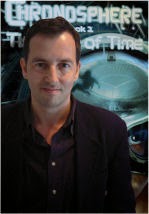
Alex Woolf has worked as a writer and editor for over 20 years and has published around 80 works of fiction and non-fiction, mainly for children and young adults. His non-fiction encompasses a whole variety of subjects, from science and the natural world to politics and social issues, but his favourite subject is history. By far his biggest work to date is his Short History of the World, which has sold over 45,000 copies in the English-speaking world and been translated into seven different languages since it first appeared in 2008.
Alex’s fiction includes the Chronosphere series, a a time-warping science-fiction trilogy, and Aldo Moon and the Ghost of Gravewood Hall, described by best selling crime writer Peter James as witty, ghostly and at times deliciously ghastly. He’s also written Soul Shadows, a horror novel about shadows that come to life, which has been shortlisted for the 2014 RED Book Award. Alex is a regular author for Fiction Express, online publishers of interactive stories for schools. He writes a chapter a week, and children vote on how the story should continue. 2014 sees the release of Iron Sky: Dread Eagle, his first foray into the world of steampunk. He lives in Southgate, North London, with his wife and two children.

By: Anita Loughrey,
on 9/7/2011
Blog:
Anita Loughrey's Blog
(
Login to Add to MyJacketFlap)
JacketFlap tags:
Add a tag
Wow! I'm so excited!
What should be delivered to me this morning but, six beautiful copies of Using Story to Teach ICT ages 5-6 . It is the first book in a series of four on teaching ICT in a creative, cross-curricular way and was published by Hopscotch Educational.
. It is the first book in a series of four on teaching ICT in a creative, cross-curricular way and was published by Hopscotch Educational.
It is great being able to hold the books in my hand. This is the absolutely best things about being a full-time writer. I LOVE IT. Can you see my name on the cover?

By: Anita Loughrey,
on 9/6/2011
Blog:
Anita Loughrey's Blog
(
Login to Add to MyJacketFlap)
JacketFlap tags:
Add a tag
You know it has been five months since I updated my blog.
Five Months!!! A lot can happen in five months. I have had several new books published for a start. These are the covers for my Colours Around Me Series  published by QED.
published by QED.
There are four educational picture books in the series, aimed at 2-4 year olds and they are designed to help children recognise different colours

in their own environment.

By: Anita Loughrey,
on 4/5/2011
Blog:
Anita Loughrey's Blog
(
Login to Add to MyJacketFlap)
JacketFlap tags:
Add a tag
On Mothers' Day, I travelled into Oxford on the train with my youngest son, Joseph, to see Candy Gourlay talk about her book at the Oxford Literary Festival. Candy's book, Tall Story , was shortlisted as one of Blue Peter's favourite stories in the Blue Peter Book Awards, along with Philip Reeve's, A Web of Air (Mortal Engines)
, was shortlisted as one of Blue Peter's favourite stories in the Blue Peter Book Awards, along with Philip Reeve's, A Web of Air (Mortal Engines) , and the overall winner, Dead Man's Cove
, and the overall winner, Dead Man's Cove by Lauren St John.
by Lauren St John.
When we arrived the first thing we did was go and buy some cake, which was yummy. We then took a look around and met Christopher Lloyd. Not the actor but the author. He has written the What on Earth? Wallbook: From the Big Bang to the Present Day. The Wallbook features more than 1,000 pictures and captions that tell the story of the planet, life and people from the beginning of time to the present day. Christopher gave Joe a quiz to do. All the answers were somewhere on the giant Wallbook. We got about half-way through but, had to stop to go to Candy's Event.
(C) Sarah McIntyre
The session took place in Christ Church Hall, which is where they filmed the meal scenes for
Harry Potter
. It was a stunning place, very grand but also very cold. Whil

By: Anita Loughrey,
on 3/23/2011
Blog:
Anita Loughrey's Blog
(
Login to Add to MyJacketFlap)
JacketFlap tags:
Add a tag
Yesterday, I visited the
Owl Bookshop, Kentish Town for the launch of
Miriam Halahmy's young adult novel,
Hidden
, published by
Meadowside Books. It is also available for the
Kindle
.
Hidden
is the first in a trilogy set on Hayling Island. It is about a fourteen year old girl called, Alix, who hides an injured illegal immigrant and all the complications that entails. Alix has never really thought about asylum seekers before as she has a whole load of her own teenage problems to worry about. But, now she is confronted by the... 'international politics of war, terrorism and refugees.'
Miriam has tackled this gritty subject with empathy and expertise. Get a copy and read it, I know you will be impressed. I was lucky enough to read a first draft and was drawn in from the start and everyone knows that if I'm not hooked by the first few pages I will not bother reading the book. I can't wait to find out what changes were made before it reached the final version in the book.
Here is Miriam at her launch talking to her agent
Eve White. That is my copy of the book she is about to sign on the table.
Miriam also writes poetry and runs creative writing classes in London. You can find out more about her and her books on her website:
http://www.miriamhalahmy.com/.

By: Anita Loughrey,
on 3/18/2011
Blog:
Anita Loughrey's Blog
(
Login to Add to MyJacketFlap)
JacketFlap tags:
Add a tag
The other day, I had a little rant about one of the sad things that had been drawn to my attention by signing up to Google Alerts. Today, I thought I should let you know about one of the good things.
One of my publishers, Brilliant Publications, has set up a lovely website where they publicise their books. Each day they post a teaching activity from one of the books they publish, to give you a flavour of the book.
Well, I was very pleased to find out that one of my ideas was used for their
Activity of the Day. It was actually the second activity they posted and was from my book
100+ Fun Ideas for Science Investigations.
The activity is to investigate, 'How can you make your shadow bigger?' and is linked to Physical Processes in Science (Ages 9–11). The book contains lots of practical and fun experiments that can be easily carried out in the classroom and help to developp the children's skills of scientific enquiry.
But, don't take my word for it. Go check it out for yourself.

By: Anita Loughrey,
on 3/16/2011
Blog:
Anita Loughrey's Blog
(
Login to Add to MyJacketFlap)
JacketFlap tags:
Add a tag
Now, some of you know all ready how I spend hours seaching for myself on the web. Yes, I do! And I have mentioned that I have set up Google Alerts for my name so if anyone writes about me I get sent an email with the link so I can go check it out.
This is one of the books I am most proud of writing. It covers the whole of the
Primary Literacy Framework suggesting three or more activities for each of the learning objectives from Year One to Year Six. It is jam packed full of ideas and I would highly recommend it to new teachers, highly-experienced, supply teachers, learning support assistants and I would also recommend it to anyone who needs an idea for a school visit activity.
There are ideas for drama, reading, writing, speaking and listening and working creatively in groups.
I think it is a brilliant book, even if I did write it myself. In fact, it is the book I wished I'd had when I was still teaching full-time.
OK, rant over! Go have a look at it for yourself and make up your own mind what you think.

By: Anita Loughrey,
on 3/15/2011
Blog:
Anita Loughrey's Blog
(
Login to Add to MyJacketFlap)
JacketFlap tags:
Add a tag

At the last SCBWI Professional Series meeting, Elizabeth Hawkins talked about Voice and Viewpoint. Using manuscripts volunteered by those attending, she demonstrated how a story could be told in a different way by changing the voice and the viewpoint.
Every writer has to make their own choice. It does depend on the book. No matter what the viewpoint you have to bear in mind the question: 'Is that my character speaking, or is it me?'
By changing a text into the present tense she showed us how it could be more immediate. We were able to compare this to a more traditional narrator style viewpoint. It was good to see how it subtly changed the feel of the story. The present tense is fashionable at the moment but, very tricky to bring off.
Elizabeth explained that in an action-packed writing scene it is easier to use third person, as there is not so much reflection and interpretation to stop the flow of the action. The reflection requires prior knowledge of what is going on and tells the reader how they should feel about this. We need to avoid telling the reader what to think. A tighter viewpoint helps the reader to see and feel the action. The actions needs to go at the speed of the character - seeing what they see, in the order it happens. Strangely, the third person, even if it is written in the past tense gives the experience of reading it as it happens. In intense danger scenes, a tighter viewpoint adds more tension but, you can pull back this tension in other scenes to let the reader reflect.
With viewpoint it is better not to be original but, to let your story do the talking. A lot of teenage books are written in first person. When writing in the first person and present tense you have to consider how much you are supposed to know at any one time.
The omniscient narrator, such as the Victorian, 'My dear reader', can work in a different way. However, if you talk to the reader you distance them. The omniscient narrator where you don't even change scenes to change viewpoint can suit a big saga. But, it is important to make sure the character is mentioned before you change viewpoint.
Back-story can slow the pace. When adding back-story, the writer needs to seriously consider if it is really needed. It slows the tension and you may find you do not need all the detail. Ask yourself why you are putting it in, as it losses the ability to catch the reader early on. It is better to take out this narrator intrusion.
It is good to experiment with viewpoint within a story. Keep in mind it is the book we are really concerned about. What makes it great is the hard draft of the writing. You can read a book and not remember what person it is written in - it is the essence of the story you remember. You can do anything as

By: Anita Loughrey,
on 3/14/2011
Blog:
Anita Loughrey's Blog
(
Login to Add to MyJacketFlap)
JacketFlap tags:
Add a tag
I was shocked and deeply saddened by the terrible events in Japan and the thousands of deaths that occured. It certainly does put my own problems into perspective. These poor people, just carrying out their normal daily routines one second and then disaster strikes. Life will never be the same. If, like me, you were wondering what you could do to help, I recommend you all take a look at this website -
Authors for Japan A whole load of
authors have offered dedications, tutoring, sets of books and lots of other goodies to the highest bidders to raise money to help the people devastated by the earthquake and tsunami in Japan.Bidding starts tomorrow, Tuesday 15th March, at 8am GMT and ends at 10pm GMT on Friday 18th March. The bidder who has made the highest bid in UK Pounds, will be notified by email and sent instructions on how to make their donations to the
British Red Cross Japan Tsunami Appeal.
It is the least we can do.

By: Anita Loughrey,
on 3/4/2011
Blog:
Anita Loughrey's Blog
(
Login to Add to MyJacketFlap)
JacketFlap tags:
Add a tag
As part of my youngest son's homework for World Book Day, he had to make a model of a fairytale adventure. He made up his own. It consisted of a castle in a shoebox made from card and toilet rolls and a lot of orange crepe paper where it was burning down. He then came and asked me for a dragon to put in it.
Unfortunately, I did not have any dragons. Why not? I'm not quite sure. Every mother should have a stock of miniture dragons handy just in case of emergencies. However, what I did have was a rather cute selection of sheep, which I had knitted after, Sarah McIntyre's, Vern and Lettuce book launch. See post: Vern and Lettuce.
book launch. See post: Vern and Lettuce.
So, I added some wings and a tail and hey presto... I turned a sheep into a dragon.
Here is the dragon in its habitat. I hope you like it.
What has this got to do with writing for children?
Well... because I liked the title so much, I have spent the day writing a picture book text called 'How to Turn a Sheep into a Dragon' - it is all about a sheep who wants to be a dragon and the crazy things it gets up to on its quest. It needs a bit of editing but, I hope to send it to a publisher sometime soon.

By: Anita Loughrey,
on 3/3/2011
Blog:
Anita Loughrey's Blog
(
Login to Add to MyJacketFlap)
JacketFlap tags:
Add a tag
Today is World Book Day.
My youngest son was supposed to dress up as a book character for school but, he refused. Apparently, he discussed it with his friends and none of them were dressing up. I did suggest slipping the Peter Pan hat into his bag and he could put it on if he changed his mind. But, NO! He did not want to. Not even, if I dressed up as Wendy and wore my night clothes all day.
To celebrate World Book Day I decided to post this video sent to me by Philip Steele from NIbWeb. It demonstrates what happens to a book when it is taken over by infographics. It made me laugh, anyway.
I thought it was rather clever and not just because it has a VW Type 2 campervan in it. Take a look and let me know what you think.

By: Anita Loughrey,
on 2/15/2011
Blog:
Anita Loughrey's Blog
(
Login to Add to MyJacketFlap)
JacketFlap tags:
Add a tag

By: Anita Loughrey,
on 2/6/2011
Blog:
Anita Loughrey's Blog
(
Login to Add to MyJacketFlap)
JacketFlap tags:
Add a tag
For Christmas, my sister bought me a beautiful sketch book and a set of Derwent Graphic sketching pencils. I have never drawn before - not really! OK! I've drawn a couple of pencil sketches to support features I've written that have been published in small press magazines! You can see them on my website in the photogallery. But, I've never had any training and I've never just drawn for fun. Sitting down and sketching for fun is something I've always wanted to try.
This is why, I decided to go to the SCBWI London Sketch Crawl at the Museum of Childhood at Bethnal Green. The museum has the largest collection of toys, dolls, doll's houses and games in the world. I met up with fellow SCBWI members and professional illustrators, Anne-Marie Perks, Clare Tovey and Bridget Strevens. We spent a few hours in the morning sketching the artefacts.
Here are the results of my little dabble at being an artist for a day. I have also posted photographs of the things I drew so you could see how close I got to the originals.
I found it was a case of drawing what you see. I tried to put the lines in the right place. Here you can see I changed the wing and the back rudder. I did this on purpose because I thought it didn't look right the way I had originally drawn it. I couldn't work out how to get the lines to look like a wing, so I made up my own.
The picture of the rocking horse took me nearly an hour to draw. I had decided before I went I was going to draw a rocking horse and I was determined to do it. I had also decided before I went (as I knew I was going to go to a toy museum) that I wanted to draw some teddy bears. Here is the result:

By: Anita Loughrey,
on 2/1/2011
Blog:
Anita Loughrey's Blog
(
Login to Add to MyJacketFlap)
JacketFlap tags:
Add a tag
Guess what? I just found out there is a Stats Tab for my blog. People do read my blog after all. I am not writing into a vacuum.
Blogger has worked out how many hits I get for each post and which month my blog was the busiest. This is kind of cool. I found out the post with the most hits is:
Agents who accept picture book authors. It has had 827 page views. Most of the hits came from the US. It was written on 15 Jul 2007. Not sure if I should mention or not, the information contained in this post is very out-of-date. For more up-to-date info I recommend you check out the most recent
Children's Writers' Artists' Yearbook 
.
The next most read posts in order are:
This is quite interesting as they are all about writing forums. I think this tells us a lot. Maybe most writers are like me and try to combat the feeling of isolation by joining networking groups?
Even so, the fact my blog is fairly quiet is kind of reassuring, as I am less likely to be making a total fool of myself on a world wide scale. I have a nice select group of readers. Thank you.
JBut, the best thing I found out was that I had 165 people attend my
Virtual Book Launch last September. This made me very happy. I am hoping to have another virtual book launch very soon, as I have a few books coming out this year.
View Next 25 Posts



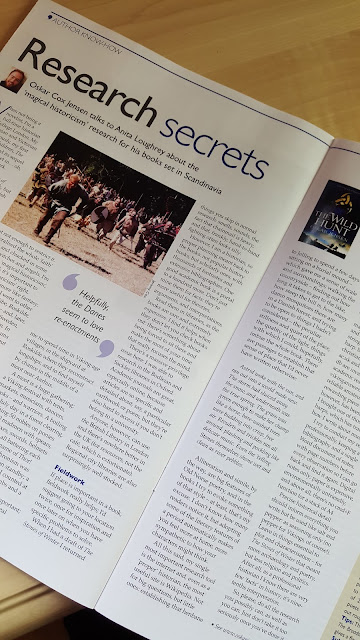










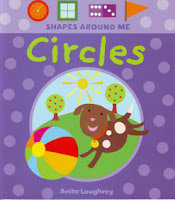






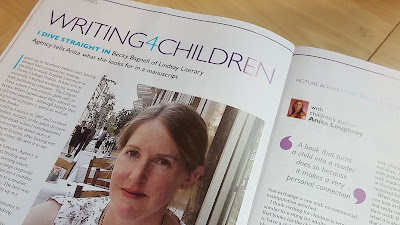




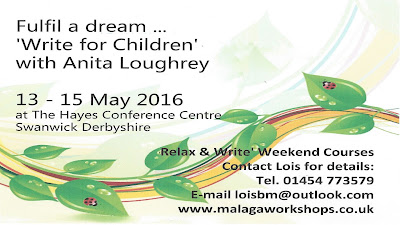




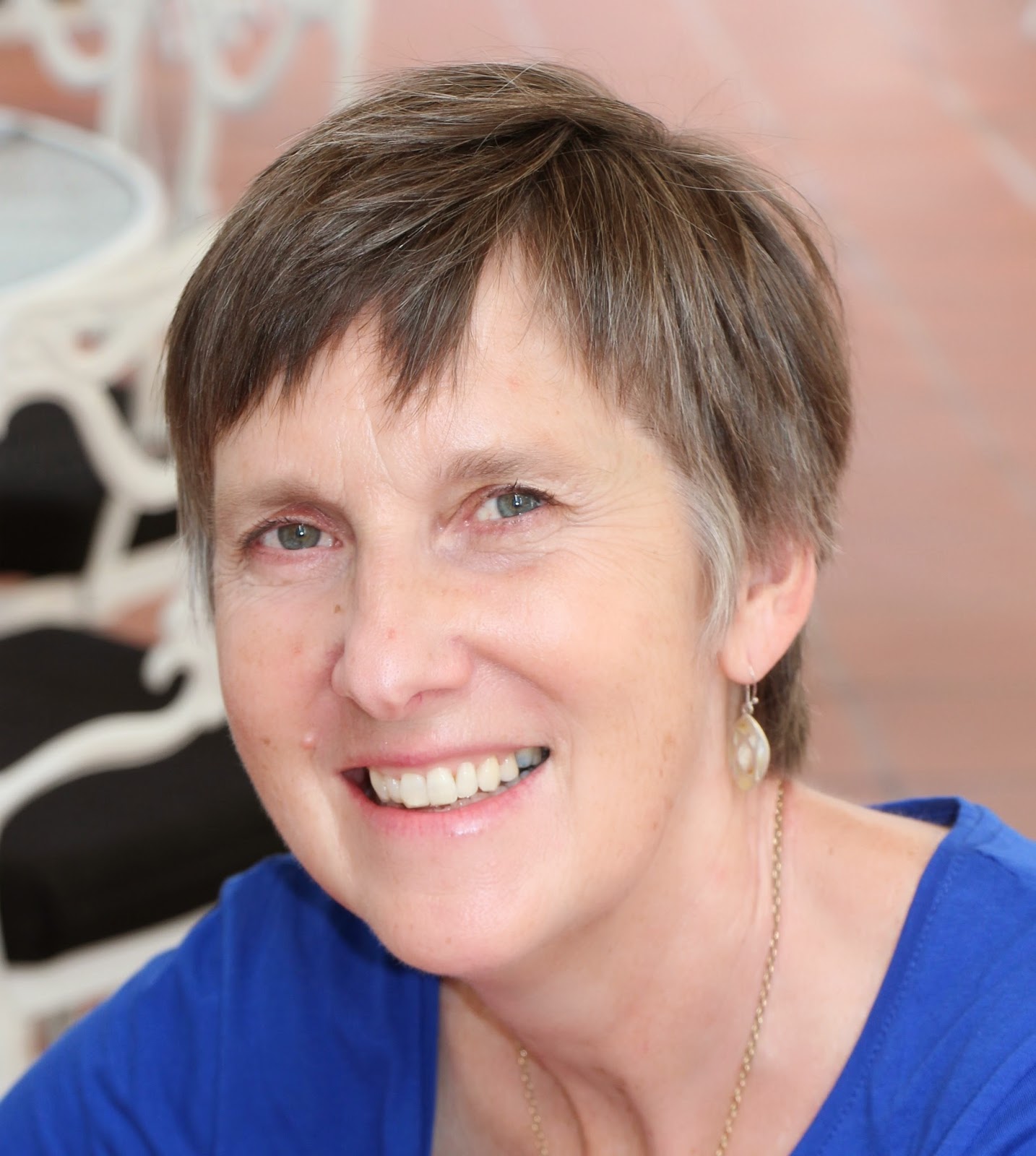








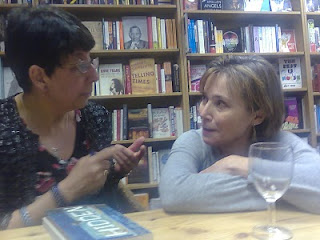

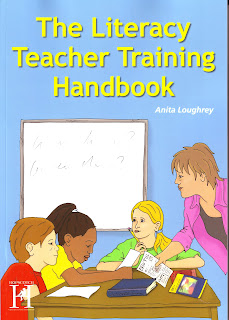


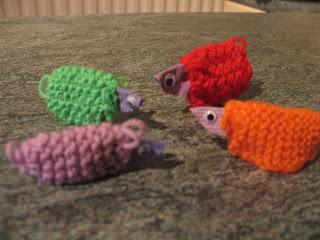
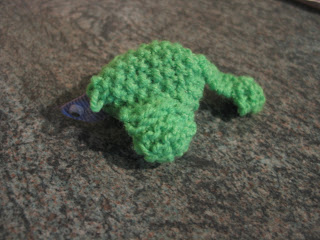
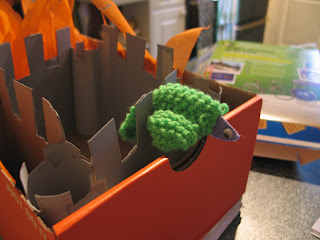






And I thought you were just dippy and messing about when you are really working hard and putting me to shame.
Well done on all your lovely colourful books. Proud to know you!